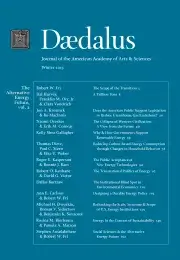The Public Acceptance of New Energy Technologies
In the wake of ominous results about the impending path of climate change, and with gasoline prices hovering around four dollars per gallon, the 2012 presidential and congressional campaigns are full of claims and counterclaims about the transformation of the U.S. energy system. Although much discussion has centered on the need for new energy technologies, this debate as yet has been narrow and limited. Meaningful deployment of any technology will raise questions of public acceptance. Little is known about how diverse publics in the United States will respond to the advent of new energy sources, whether they involve a “second renaissance” for nuclear power, a dash to embrace hydraulic fracking for oil and natural gas, or emerging prospects for renewable energies like wind and solar power. Yet public acceptance will determine the outlook. Adding further complication is the growing debate about traditional energy sources and the extent to which a fossil fuel – based energy system should continue to be central to the American economy. This essay explores the issues involved in public acceptance of stability and change in the U.S. energy system. We conclude with several recommendations for gaining a greater understanding of the public acceptance quandary.
In the United States, new technology promising to solve the nation’s sundry problems seems to be everywhere, and nowhere more than in the energy sector. Amid an economic downturn and rampant unemployment, the vision of new technologies beckons. The nuclear dream appears in the new guise of a “second nuclear renaissance,” which offers a safer and more acceptable technology as well as the prospect of decentralized nuclear reactors operating at a community or neighborhood scale. In the search for a bridge to an energy system without fossil fuels, shale gas has burst into the energy arena as a salvation with nearly unlimited supply and the potential to reduce greenhouse gas emissions relative to coal. Meanwhile, renewable energy sources–especially wind and solar power– are touted as long-term solutions for achieving low-carbon and, eventually, low-cost energy options for the future. Accordingly, the race is on to ensure that the needed technology will be there. Some observers have even espoused technological solutions through geoengineering to deal with past and accumulating carbon emissions in the atmosphere.
Not all of these are new technologies, however; some are new applications of existing or old technologies. Windmills have abounded for several centuries, but their scale and size have shifted dramatically. Currently, offshore wind technologies are in the early stages of deployment.1 Fracking involves new processes for liberating natural gas from shale formations, but established technologies have largely been the instruments used to capture this energy source. Even the exploration of decentralized nuclear plants has drawn largely from existing technology, with new deployment oriented at a different scale.
. . .
